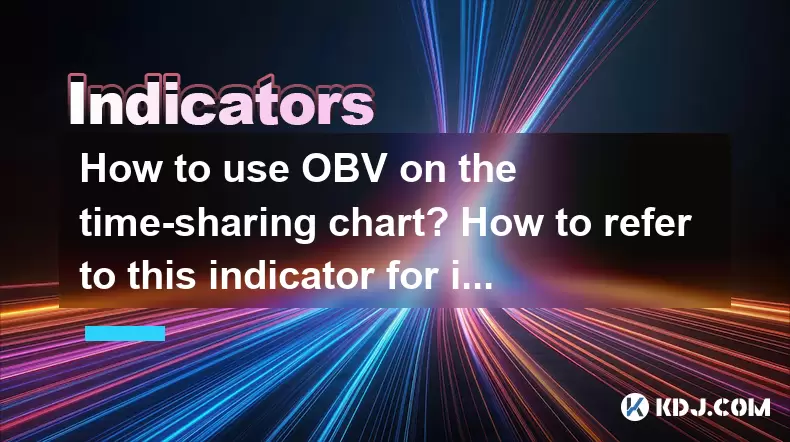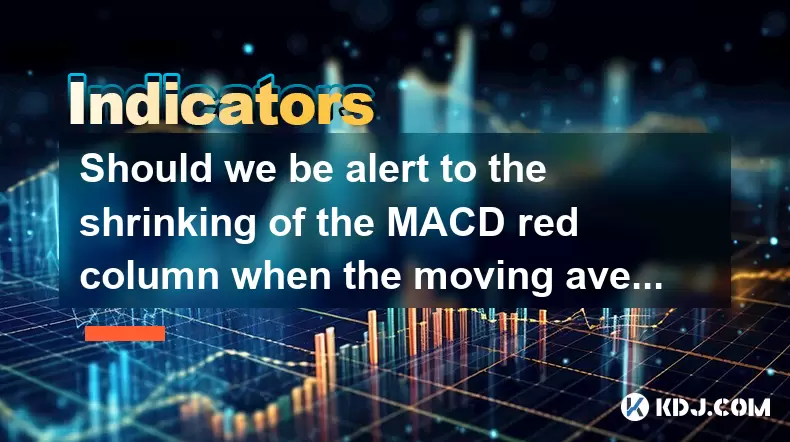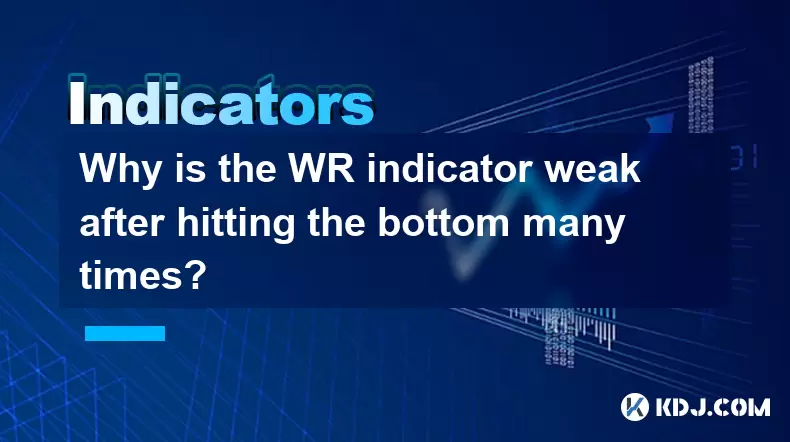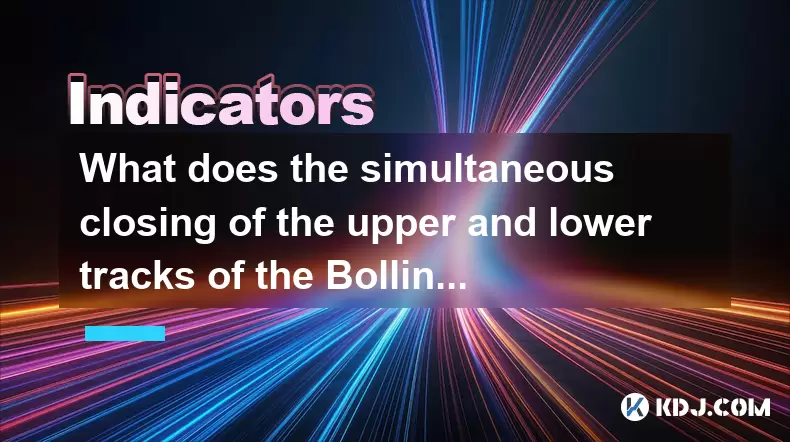-
 Bitcoin
Bitcoin $101,898.5005
-0.75% -
 Ethereum
Ethereum $2,258.1125
-1.07% -
 Tether USDt
Tether USDt $1.0004
0.01% -
 XRP
XRP $2.0178
-2.93% -
 BNB
BNB $624.0243
-1.53% -
 Solana
Solana $134.3298
-0.90% -
 USDC
USDC $0.9999
0.01% -
 TRON
TRON $0.2675
-2.05% -
 Dogecoin
Dogecoin $0.1538
-1.96% -
 Cardano
Cardano $0.5482
-1.11% -
 Hyperliquid
Hyperliquid $35.5636
5.45% -
 Bitcoin Cash
Bitcoin Cash $453.4902
-1.66% -
 Sui
Sui $2.5134
-2.97% -
 UNUS SED LEO
UNUS SED LEO $9.1292
1.77% -
 Chainlink
Chainlink $11.8457
-1.60% -
 Stellar
Stellar $0.2312
-2.73% -
 Avalanche
Avalanche $16.9721
0.29% -
 Toncoin
Toncoin $2.7549
-3.82% -
 Shiba Inu
Shiba Inu $0.0...01081
-1.10% -
 Litecoin
Litecoin $80.8250
-0.71% -
 Hedera
Hedera $0.1374
0.21% -
 Monero
Monero $305.4827
-2.36% -
 Ethena USDe
Ethena USDe $1.0006
0.00% -
 Dai
Dai $1.0000
-0.01% -
 Polkadot
Polkadot $3.2085
-3.12% -
 Bitget Token
Bitget Token $4.0845
-3.13% -
 Uniswap
Uniswap $6.3353
-1.63% -
 Pi
Pi $0.5085
-0.70% -
 Pepe
Pepe $0.0...08913
-3.82% -
 Aave
Aave $232.7090
-0.58%
How to use OBV on the time-sharing chart? How to refer to this indicator for intraday trading?
OBV on time-sharing charts helps intraday crypto traders spot trends and reversals by analyzing volume flow, confirming breakouts, and identifying divergences.
May 23, 2025 at 07:49 am

The On-Balance Volume (OBV) indicator is a widely used tool in the cryptocurrency trading community for analyzing the flow of volume in relation to price movements. When applied to a time-sharing chart, OBV can offer valuable insights for intraday trading. This article will guide you through the process of using OBV on a time-sharing chart and how to effectively interpret this indicator for making intraday trading decisions.
Understanding OBV and Its Importance in Cryptocurrency Trading
On-Balance Volume (OBV) is a momentum indicator that uses volume flow to predict changes in stock price. The core principle behind OBV is that volume precedes price movement. If a cryptocurrency closes higher than the previous period, the entire volume of that period is considered up-volume. Conversely, if it closes lower, the entire volume is considered down-volume. This helps traders identify potential trends and reversals in the market.
In the context of cryptocurrency trading, OBV can be particularly useful due to the high volatility and volume fluctuations often seen in crypto markets. By integrating OBV into a time-sharing chart, traders can gain a more granular view of how volume is impacting price movements throughout the trading day.
Setting Up OBV on a Time-Sharing Chart
To use OBV on a time-sharing chart, you need to follow these steps:
Choose a reliable trading platform: Ensure that your trading platform supports OBV and time-sharing charts. Popular platforms like Binance, Coinbase Pro, and TradingView offer these features.
Open a time-sharing chart: Navigate to the cryptocurrency pair you wish to analyze and select the time-sharing chart option. This chart displays price movements in short intervals, typically ranging from 1 minute to 15 minutes.
Add the OBV indicator: Look for the indicators menu in your trading platform. Search for "On-Balance Volume" or "OBV" and add it to your time-sharing chart. The OBV line will appear below the price chart, reflecting the cumulative volume based on price changes.
Adjust the settings if necessary: Some platforms allow you to adjust the OBV settings, such as the period length. For intraday trading, keeping the default settings is often sufficient, but you may want to experiment with different periods to see what works best for your trading strategy.
Interpreting OBV on a Time-Sharing Chart for Intraday Trading
When using OBV on a time-sharing chart for intraday trading, it's important to understand how to interpret the indicator's movements. Here are some key points to consider:
Trend Confirmation: If the OBV line is moving in the same direction as the price, it confirms the current trend. For example, if the price is rising and the OBV is also rising, it suggests that the upward trend is supported by increasing volume.
Divergence: Divergence occurs when the OBV line moves in the opposite direction of the price. Bullish divergence happens when the price is declining but the OBV is rising, indicating that buying pressure is increasing despite the falling price. Bearish divergence is the opposite, where the price is rising but the OBV is falling, suggesting that selling pressure is increasing despite the rising price.
Breakouts: OBV can help identify potential breakouts. If the OBV line breaks out of a consolidation pattern before the price does, it can signal that a price breakout is imminent. This can be particularly useful for intraday traders looking to capitalize on short-term price movements.
Using OBV for Intraday Trading Decisions
When making intraday trading decisions based on OBV, consider the following strategies:
Entering a Trade: If you observe a bullish divergence on the OBV, it might be a good time to enter a long position. Conversely, if you see a bearish divergence, consider entering a short position.
Exiting a Trade: Use OBV to help determine when to exit a trade. If the OBV line starts to flatten or decline while the price is still rising, it could be a signal to take profits or exit the trade to avoid potential reversals.
Confirming Breakouts: Before acting on a price breakout, wait for the OBV to confirm the move. If the OBV breaks out first, it increases the likelihood that the price breakout will be sustained.
Practical Example of Using OBV on a Time-Sharing Chart
Let's walk through a practical example of using OBV on a time-sharing chart for intraday trading:
Scenario: You are monitoring Bitcoin (BTC) on a 5-minute time-sharing chart.
Observation: You notice that the price of BTC has been consolidating in a range for the past hour. The OBV line, however, has started to trend upward, breaking out of its own consolidation pattern.
Action: This OBV breakout suggests that volume is increasing and a price breakout may be imminent. You decide to enter a long position, setting a stop-loss just below the recent consolidation range.
Outcome: The price of BTC breaks out of the range and continues to rise. The OBV continues to trend upward, confirming the move. You monitor the OBV for any signs of divergence or flattening, which would signal a potential exit point.
Common Pitfalls and How to Avoid Them
While OBV can be a powerful tool for intraday trading, there are common pitfalls that traders should be aware of:
False Signals: Like any indicator, OBV can produce false signals. Always use OBV in conjunction with other technical indicators and analysis methods to confirm signals.
Over-reliance: Relying solely on OBV without considering other market factors can lead to poor trading decisions. Always consider the broader market context and other indicators.
Ignoring Volume Spikes: Sudden volume spikes can distort OBV readings. Be cautious of these spikes and consider their context before making trading decisions based on OBV.
Frequently Asked Questions
Q: Can OBV be used on all time frames, or is it better suited for specific ones?
A: OBV can be used on any time frame, but it is particularly effective on shorter time frames like those used in intraday trading. This is because OBV's sensitivity to volume changes can provide more timely signals on shorter time frames, making it valuable for intraday traders.
Q: How does OBV perform during high volatility periods in the cryptocurrency market?
A: During high volatility periods, OBV can be more challenging to interpret due to rapid price and volume fluctuations. However, it can also be more valuable, as it helps traders identify the underlying volume trends that may be driving the price movements. Always use OBV in conjunction with other indicators during such periods.
Q: Are there any specific cryptocurrencies where OBV works better?
A: OBV can be applied to any cryptocurrency, but it tends to work better on those with higher trading volumes and liquidity, such as Bitcoin and Ethereum. These cryptocurrencies have more reliable volume data, which can lead to more accurate OBV readings.
Q: How often should I check OBV on a time-sharing chart during intraday trading?
A: For intraday trading, it's advisable to check OBV on a time-sharing chart frequently, ideally every 5 to 15 minutes, depending on the time frame you are trading. This helps you stay updated on any changes in volume trends that could impact your trading decisions.
Disclaimer:info@kdj.com
The information provided is not trading advice. kdj.com does not assume any responsibility for any investments made based on the information provided in this article. Cryptocurrencies are highly volatile and it is highly recommended that you invest with caution after thorough research!
If you believe that the content used on this website infringes your copyright, please contact us immediately (info@kdj.com) and we will delete it promptly.
- DOGE Recovery Amid US-Iran Tensions: A Market Rollercoaster
- 2025-06-23 20:45:13
- Fiserv, PayPal, and Stablecoins: A New Era of Interoperability?
- 2025-06-23 20:45:13
- Shytoshi Kusama, SHIB Dev, and Alpha Layer: Decoding the Latest Developments
- 2025-06-23 20:25:12
- BTC, ETH, and Institutional Buying: Smart Money Piling In?
- 2025-06-23 20:25:12
- Sonic Boom or Market Gloom? Navigating Volatility with Sonic, SPX6900, and Crypto
- 2025-06-23 20:55:12
- Shakespeare Coin for Sale: Rare Find or Fool's Gold?
- 2025-06-23 20:55:12
Related knowledge

Does the second golden cross of MACD above the zero axis represent the continuation of strength?
Jun 23,2025 at 08:21pm
Understanding the MACD IndicatorThe Moving Average Convergence Divergence (MACD) is a widely used technical analysis tool in cryptocurrency trading. It consists of three main components: the MACD line, the signal line, and the histogram. The MACD line is calculated by subtracting the 26-period Exponential Moving Average (EMA) from the 12-period EMA. The...

Is it effective when the DIF line suddenly crosses the zero axis when the volume is shrinking and the market is trading sideways?
Jun 23,2025 at 07:29pm
Understanding the DIF Line in Technical AnalysisThe DIF line, or the Difference Line, is a critical component of the MACD (Moving Average Convergence Divergence) indicator, widely used in technical analysis across cryptocurrency and traditional financial markets. It represents the difference between the 12-period EMA (Exponential Moving Average) and the...

Should we be alert to the shrinking of the MACD red column when the moving average is arranged in a bullish pattern?
Jun 23,2025 at 08:14pm
Understanding the MACD Red Column and Its SignificanceThe Moving Average Convergence Divergence (MACD) is a widely used technical indicator in cryptocurrency trading. It consists of three main components: the MACD line, the signal line, and the MACD histogram (the red column). The red column represents the difference between the MACD line and the signal...

Why is the WR indicator weak after hitting the bottom many times?
Jun 23,2025 at 07:56pm
Understanding the WR Indicator in Cryptocurrency TradingThe Williams %R (WR) indicator is a momentum oscillator used by traders to identify overbought and oversold levels in the market. It ranges from 0 to -100, with readings above -20 considered overbought and below -80 considered oversold. In the context of cryptocurrency trading, where volatility is ...

Is the shrinking cross star after the historical high a signal of topping?
Jun 23,2025 at 05:56pm
Understanding the Shrinking Cross Star PatternIn technical analysis, candlestick patterns are essential tools for traders to predict potential price movements. One such pattern is the shrinking cross star, which appears as a small-bodied candle with long upper and lower shadows, indicating indecision in the market. When this pattern forms after an asset...

What does the simultaneous closing of the upper and lower tracks of the Bollinger Bands indicate?
Jun 23,2025 at 09:01pm
Understanding Bollinger Bands in Cryptocurrency TradingBollinger Bands are a widely used technical analysis tool in cryptocurrency trading. Developed by John Bollinger, this indicator consists of three lines: the middle band is typically a 20-period simple moving average (SMA), while the upper and lower bands represent two standard deviations above and ...

Does the second golden cross of MACD above the zero axis represent the continuation of strength?
Jun 23,2025 at 08:21pm
Understanding the MACD IndicatorThe Moving Average Convergence Divergence (MACD) is a widely used technical analysis tool in cryptocurrency trading. It consists of three main components: the MACD line, the signal line, and the histogram. The MACD line is calculated by subtracting the 26-period Exponential Moving Average (EMA) from the 12-period EMA. The...

Is it effective when the DIF line suddenly crosses the zero axis when the volume is shrinking and the market is trading sideways?
Jun 23,2025 at 07:29pm
Understanding the DIF Line in Technical AnalysisThe DIF line, or the Difference Line, is a critical component of the MACD (Moving Average Convergence Divergence) indicator, widely used in technical analysis across cryptocurrency and traditional financial markets. It represents the difference between the 12-period EMA (Exponential Moving Average) and the...

Should we be alert to the shrinking of the MACD red column when the moving average is arranged in a bullish pattern?
Jun 23,2025 at 08:14pm
Understanding the MACD Red Column and Its SignificanceThe Moving Average Convergence Divergence (MACD) is a widely used technical indicator in cryptocurrency trading. It consists of three main components: the MACD line, the signal line, and the MACD histogram (the red column). The red column represents the difference between the MACD line and the signal...

Why is the WR indicator weak after hitting the bottom many times?
Jun 23,2025 at 07:56pm
Understanding the WR Indicator in Cryptocurrency TradingThe Williams %R (WR) indicator is a momentum oscillator used by traders to identify overbought and oversold levels in the market. It ranges from 0 to -100, with readings above -20 considered overbought and below -80 considered oversold. In the context of cryptocurrency trading, where volatility is ...

Is the shrinking cross star after the historical high a signal of topping?
Jun 23,2025 at 05:56pm
Understanding the Shrinking Cross Star PatternIn technical analysis, candlestick patterns are essential tools for traders to predict potential price movements. One such pattern is the shrinking cross star, which appears as a small-bodied candle with long upper and lower shadows, indicating indecision in the market. When this pattern forms after an asset...

What does the simultaneous closing of the upper and lower tracks of the Bollinger Bands indicate?
Jun 23,2025 at 09:01pm
Understanding Bollinger Bands in Cryptocurrency TradingBollinger Bands are a widely used technical analysis tool in cryptocurrency trading. Developed by John Bollinger, this indicator consists of three lines: the middle band is typically a 20-period simple moving average (SMA), while the upper and lower bands represent two standard deviations above and ...
See all articles
























































































